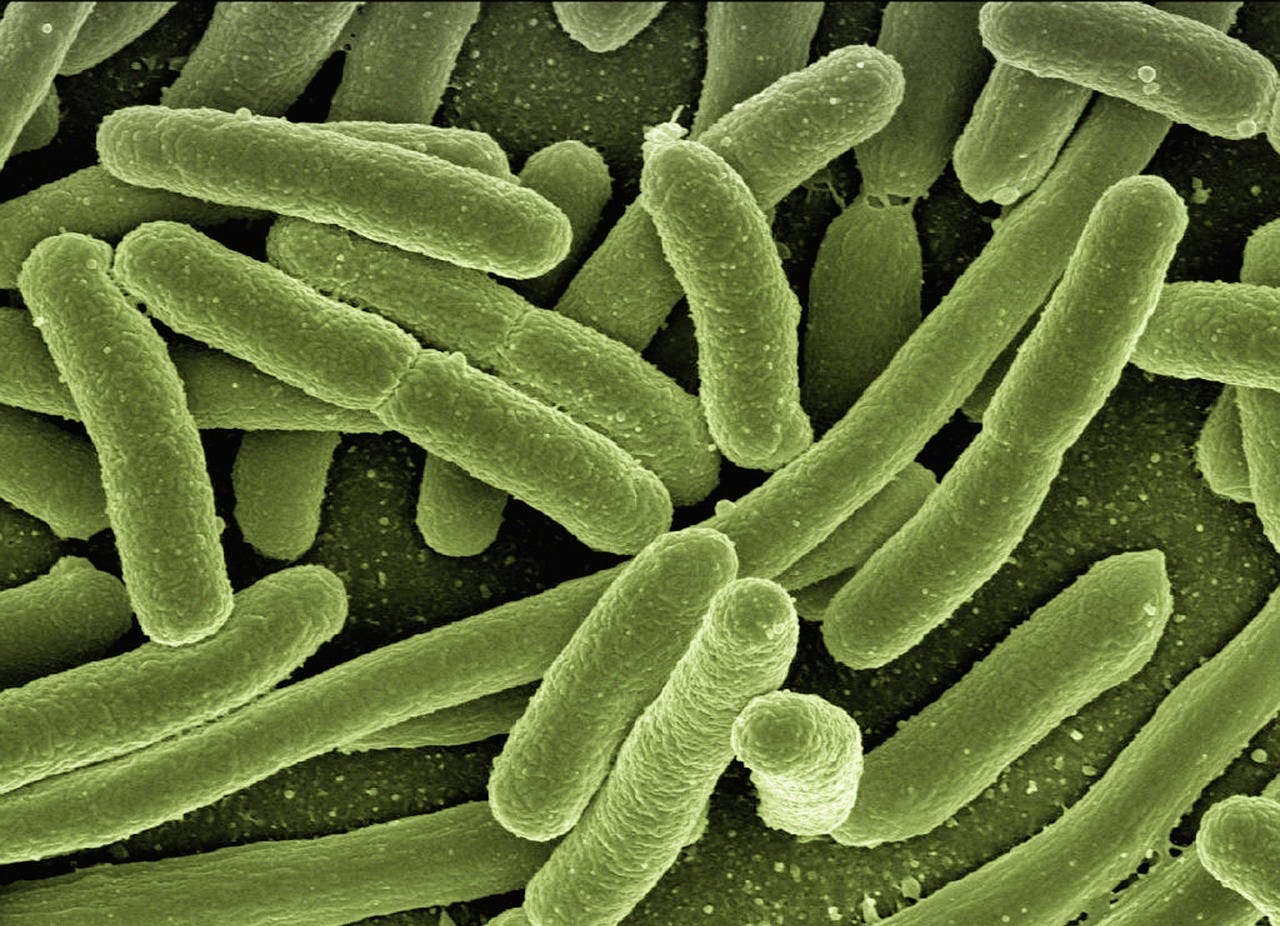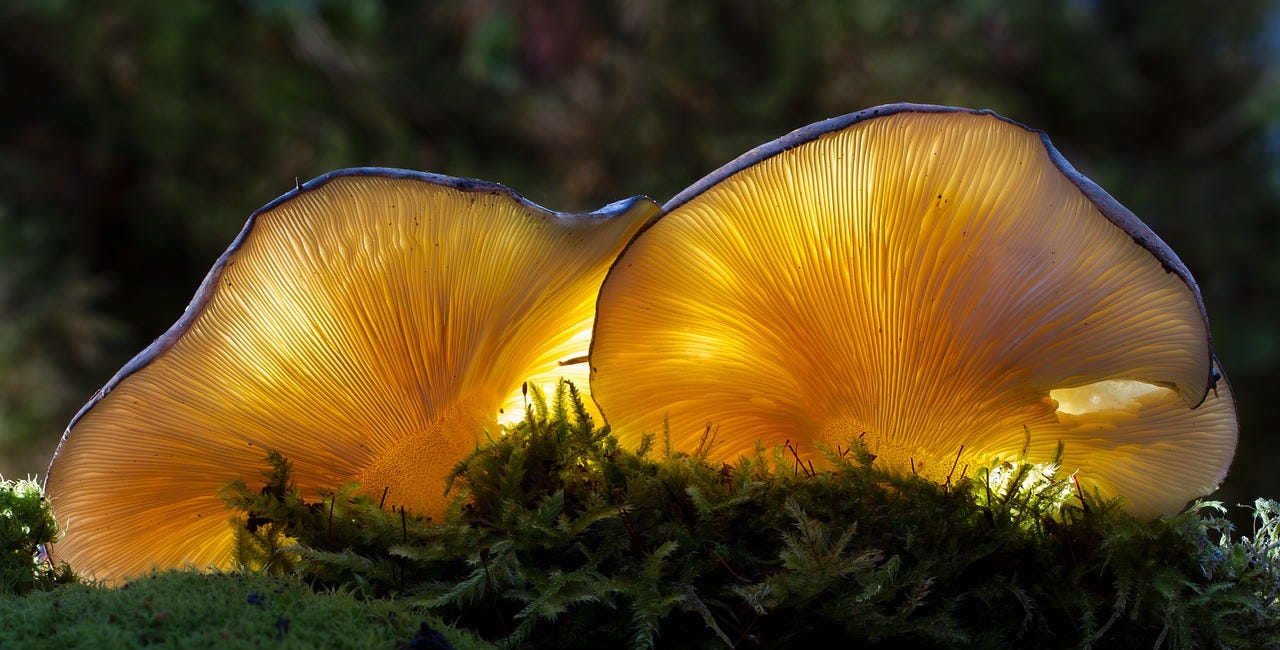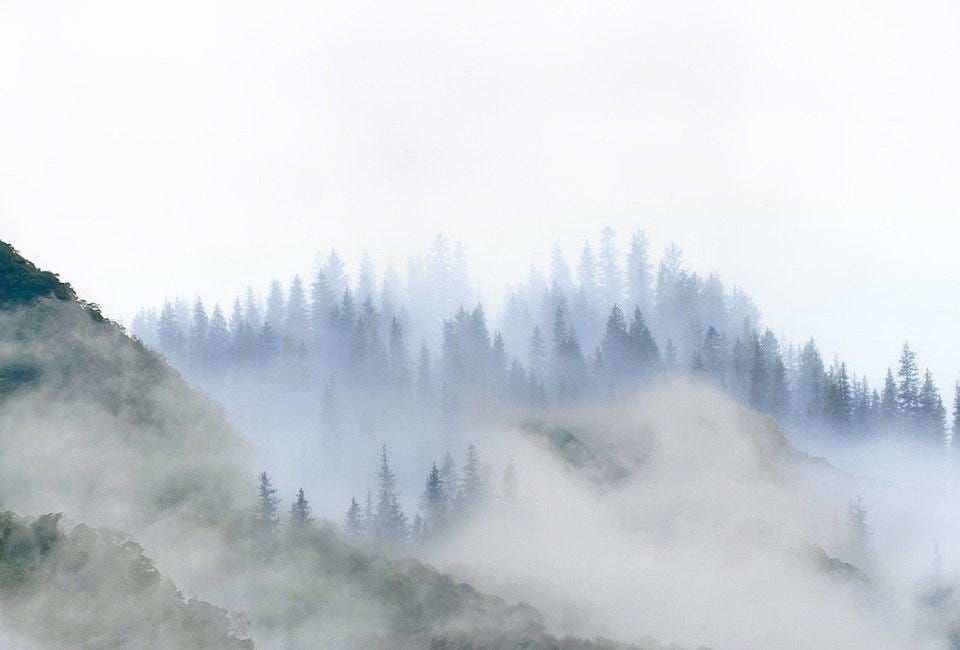Chapter 3: The Kingdoms of Archaea and Bacteria
Let the Grand Tour begin with the microorganisms of the Kingdoms of Archaea and Bacteria! Plus, are viruses alive?
Part 1: A Visit to the Tiny Kingdoms
And Jesus said unto them, I am the bread of life: he that cometh to me shall never hunger; and he that believeth on me shall never thirst.
-John 6:35, Douay-Rheims
Welcome one and all to the Grand Tour where you will see the sights and sounds, the thrills and chills of all the kingdoms. Over the next several weeks, you will get to visit creatures from the tiny to the towering, the floral and the fierce. Once you step aboard the Grand Tour you will be whisked away to meet creatures never before seen by boys and girls, hidden in the depths of the ocean and the darkest rain forests, if you are up for the adventure…
This week we will start our tour in the two kingdoms made entirely of microorganisms (those too small to be seen with the naked eyed: the Kingdoms of Archaea (ar-kay-uh) and Bacteria. Hey you, in the back, did you say they are boring? Well, that is where you are wrong. You might not be able to see them, but they can certainly see you. And without them, you wouldn’t last a day. So, what do you say? Are in for the trip of a lifetime to see all the life that there is to see?
Before we can begin, I must acquaint you with your tools for this part of the trip: a microscope. This handy tool uses lenses like those found in eye glasses to magnify our friends so that we can see them. Amazingly, in all of human history, the microscope was only invented about 450 years ago. Imagine that you might have been a medieval scholar or a Roman soldier or a worker on the pyramids and not known a thing about this part of creation. What a privilege it is to live at a time when we can behold so many wonders of the Creator!
Hop on board our robin (or you can choose the toucan), and let’s fly over to those kingdoms. First, we leave behind the villages of the Kingdom of Animals, teeming with life; soar over the Kingdom of Plants, verdant and peaceful; and then we spy in the distance two seemingly empty kingdoms. We see the fence around these two kingdoms with some lakes (one of them does appear to be a strange rainbow color), but otherwise there appears to be nothing.
How strange, you might say to yourself, but then you remember your microscope! As you zoom in, closer and closer to one of those lakes or the soil or even the air itself, you will see millions and billions and trillions of archaea and bacteria, nearly all of which are just one cell all by itself.
The Kingdom of the Archaea is filled with extreme environments, from the saltiest lakes to one that are boiling hot. Part of the kingdom is freezing cold, while another is as dry as the most arid deserts. There are wastelands of toxic sludge and radioactive chemicals. In each of these, vast numbers of archaea are found, living cozy little lives in the homes that are just right for these extremophiles. Some archaea do live in more moderate environments, such as bogs or cow intestines or the ocean, but these archaea often do strange things like live without oxygen or eat oil or make their own food from chemicals rather than sunlight. Many new archaea are found every year because they live in such surprising places, including the most astonishing place of all – your own backyard (which is a strange place to find something that we usually see in the deepest, darkest ocean)!
Next up on our Tour, we will fly on over to the Kingdom of Bacteria, a much more notorious lot, to be sure. I bet you have gotten sick from one of these little buggers before and had to take an antibiotic. It certainly is true that many germs are bacteria, but the vast majority of bacteria are not harmful to humans. As we said earlier, many are our friends. If you like bread, cheese, or yogurt, you can thank bacteria. You have more bacteria in and on your body than you have cells in your body, and it is a good thing, too, because they help protect you from germs. Like two armies facing off, the friendly bacteria and the germs fight for control. If you want to keep your bacteria army healthy and strong, be sure to maintain a healthy diet.
Take some time with your microscopes to explore this hidden part of creation!
Check out Chapter 3A Podcast Episode!

Part 2: Terra Incognita and More Familiar Lands
What I see in Nature is a magnificent structure that we can comprehend only very imperfectly, and that must fill a thinking person with a feeling of humility.
-Albert Einstein
Now that the younger students are busy with their microscopes, we can dig in a little deeper. Let’s consider this E. coli. But which kingdom does this creature belong to? It’s kinda hard to tell. Nearly all the residents of these two kingdoms, they are unicellular – made of just one cell. If we could zoom inside those cells, we would see that they are different from our own: archaea and bacteria all lack a nucleus, the part of our cells where the DNA is stored, making them prokaryotes. These two kingdoms are so similar that wee only know that E. coli belongs in the Kingdom of Bacteria because we have looked at its DNA! At the genetic level (having to do with DNA), these two kingdoms are very different, diverged by the Creator so that together they could fill every nook and cranny of our world.
Even though we know more about these two kingdoms that we used to, don’t get the idea that we know a whole lot. I mean, just check out this atlas for the Kingdom of Archaea – half of it is labeled terra incognita and covered with dragons and itty-bitty sea monsters. Makes sense though – it’s not so easy to find archaea since they live in places that are likely to kill us. We have, though, explored parts of two phyla (regions). One includes some of the most famous archaea that live in the deep ocean, often around the exceedingly hot thermal vents, whiling away the hours turning chemicals into food. The other phyla is more diverse, including archaea that live in extremely hot environments (up to 122ºC – well over the boiling point of water!), salty environments, as well as in the intestines of cows, in fresh water, and in soil.
The atlas of the Kingdom of Bacteria, on the other hand, (BANG!) is much more substantial: there are over 40,000 known species of bacteria in the world. A quarter of those might just be ones that live on people. But let me tell you, even though this puppy is quite hefty, a lot of the pages are blank, just waiting to be filled with newly discovered species. Nowadays, scientists usually organize bacteria into 30 phyla based on their DNA, but there are some more traditional ways of organizing them.
One early type of classification used gram staining in a process discovered by a Danish doctor named Hans Christian Gram. Like many scientific breakthroughs, gram staining was discovered through close observation, a lot of hard work, and a bit of luck. Dr. Gram was studying lung cells from patients with pneumonia. He put a stain called crystal violet on the tissue and, to his surprise, the bacteria in the samples seemed to soak up the stain! Even when he tried to rinse the stain away, some of the bacteria still stayed the purple color. Some of the bacteria, though, went back to their original appearance, leaving two groups. Another scientist might have done this same thing before and never realized the significance, but Dr. Gram saw that this was a way of differentiating types of bacteria into gram-positive (they keep the purple color) and gram-negative (they don’t).
Maybe you’re not to into liquids that can stain your clothes. Scientists still have you covered with autotrophic bacteria (they produce their own food) versus heterotrophic bacteria (they eat their food). Most autotrophic bacteria get their energy from the sun, so a lot of them are found on the ocean surface (incidentally, you can thank those guys for about half of the world’s oxygen). Heterotrophic bacteria are a bit more...complicated. I mean, they have to get their food from somewhere, so some of them are predators, eating other microorganisms, but a lot of them eat parts of much bigger creatures. Like, well, us. Hang on, it’s not as bad as it sounds. Those friendly bacteria, they’re symbiotic: they eat some of our food, but they also help us out. Bacteria help out all kind of creatures, like the ones like live on the roots of bean plants; the bean plants feed the bacteria and the bacteria produces ammonia, an important chemical without which the plant cannot grow. And yes, there are some that are pathogens that cause diseases like acne or stomach bugs or Lyme disease. Those are seriously a bummer, but modern medicine has given us antibiotics – courtesy of friendly bacteria that produce these chemicals in their continual wars. Some friendly bacteria actually eat us, too. Well, our dead cells, anyway. The decomposers help to rid the world of all debris, from roadkill to autumn leaves, acting as the world’s janitor to keep everything clean.
Bacteria do some pretty amazing things in our world, and we have only scratched the surface. Scientists are constantly finding new species, helping to learn more about creation and about the Creator, and maybe providing antibiotics that could help save lives in the future. But much of this Kingdom is still uncharted – adventure awaits!
Check out Chapter 3B Podcast Episode!
Bonus: Let’s Play - Are You Alive? Virus Edition
You might be wondering about another part of creation – viruses. I’m sure you have heard of these little buggers that cause the flu and coronavirus (among many other diseases). Viruses are extremely small parts of creation (even smaller than bacteria) that can infect any type of living thing. But are they themselves alive? As you might recall, living things all do seven things – get energy, excrete, respire (breathe), grow, reproduce, react to their environment, and move; additionally, living things have cells. Let’s consider if viruses do what creatures do.
A virus is a piece of DNA wrapped in a protein shell rather than being cells like bacteria. When they enter your body, they can move around and find the kind of cells that they are looking to infect. They enter the cell and cause the machinery in the cell to make more viruses. The viruses then go on to infect more cells until, of course, your immune system comes to the rescue (more on that later).
So, how did viruses do? They do have sensitivity and movement and they do grow and reproduce (although not on their own), but they do not get energy, excrete, or have respiration, nor are they made of cells. For these reasons, scientists generally do not think that viruses are living things, but we will see them again in the Commons of Creation.
Check out Chapter 3C Podcast Episode!
Ready for More?
Check Out the Next Chapter
Chapter 4: The Kingdoms of the Protists and Fungi
Welcome to the first installment in the Kingdoms of Creation home education science program. We’re glad you’re here. Each chapter is split into two parts: Part 1 is for younger students (usually K-4); Parts 1 and 2 together are for older students (usually 5-8). The Kingdoms of Creation is a comprehensive biology program. See the full table of contents
Or the Previous Chapter
Chapter 2: What Is a Creature?
Welcome to the first installment in the Kingdoms of Creation home education science program. We’re glad you’re here. Each chapter is split into two parts: Part 1 is for younger students (usually K-4); Parts 1 and 2 together are for older students (usually 5-8). The Kingdoms of Creation is a comprehensive biology program. See the full table of contents
Or Visit the Welcome Page
Welcome to the Kingdoms of Creation
A long time ago in land not so far away, the Creator made a world. This world was big and beautiful, wild and wonderful, fantastic and frightening. It was full of amazing creatures like the ping-pong tree sponge (an immobile creature that looks just like its name sounds but eats shrimp in the deep dark of the sea) and the dragon mantis (a large brown …







